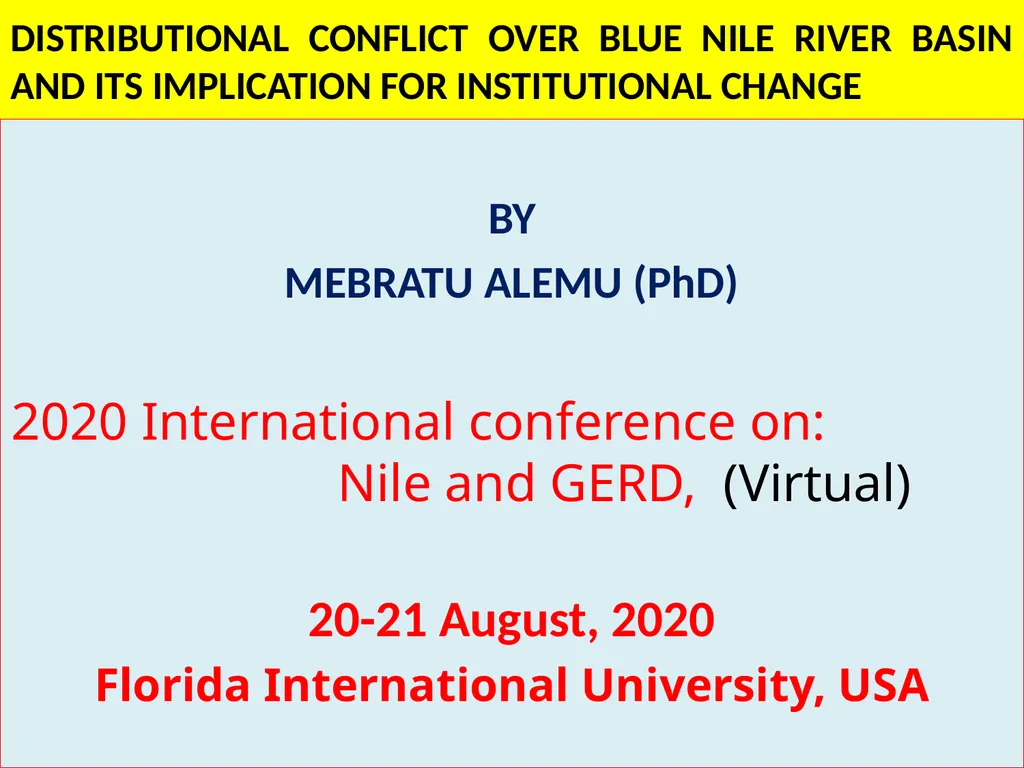
DISTRIBUTIONAL CONFLICT OVER BLUE NILE RIVER BASIN
Author: test | Published: 2025-08-04
Description: DISTRIBUTIONAL CONFLICT OVER BLUE NILE RIVER BASIN AND ITS IMPLICATION FOR INSTITUTIONAL CHANGE BY MEBRATU ALEMU (PhD) 2020 International conference on: Nile and GERD, (Virtual) 20-21 August, 2020 Florida International University, USA
Download Presentation
Download the PPT/PDF: Download
Transcript:
Loading transcript…